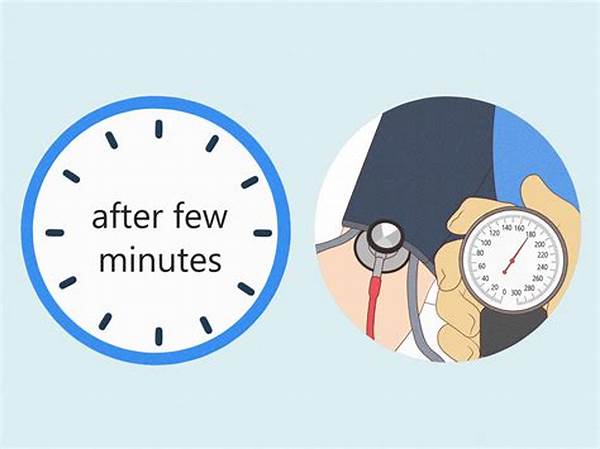In today’s bustling world of healthcare, the stethoscope stands as a silent hero—a symbol of trust and an essential tool for diagnosis. Whether you’re a budding medical student, a seasoned professional, or simply a curious learner, mastering how to use a stethoscope correctly is an endeavor both noble and necessary. This device, often associated with the quintessential image of a doctor, carries much more than just visual significance—it is a gateway to understanding the heart’s rhythms, the lungs’ whispers, and more.
Read More : Student-friendly Instruments For Learning Electronics
But amid the array of modern medical gadgets, why do we still rely on the humble stethoscope? Simple: its immediate, profound connection to a patient’s internal world, all accomplished without fanfare or the invasion of personal space. A stethoscope is the bridge between practitioner and patient, turning the act of listening into a profound form of engagement. Let’s unravel this mystery and explore the precise art of how to use a stethoscope correctly.
Understanding the Basics
What is a Stethoscope?
A stethoscope is more than just tubes and a chest piece. It is a medical marvel, a lifetime partner to many in the healthcare profession. Designed for auscultation, or listening to the internal sounds of a body, a stethoscope can be your best ally when diagnosing various conditions. But wait, we’re not just talking medicine here! It’s like those secret gadgets spies use in movies, only here, you’re deciphering heartbeats instead of hidden messages.
Why Learning to Use It Correctly Matters
Imagine having the power to hear what’s going on inside your body… cue dramatic music! Yet, learning how to use a stethoscope correctly saves lives. Correct usage can lead to the discovery of irregular heartbeats, unusual lung sounds, or even erratic intestinal movements. Misinterpret these signals, and the consequences can range from misdiagnosis to missed diagnosis. So, it’s not just a tool, it’s an opportunity to be Sherlock Holmes—minus the deerstalker hat, of course!
How to Use a Stethoscope: Step-by-Step
Getting Comfortable with Your Stethoscope
First off, let’s have a brief introduction to the anatomy of the stethoscope: ear tips, tubing, and the chest piece. Your ears and the patient’s body need to form a harmonious relationship through this tool. Select ear tips that fit snugly but comfortably—they should seal out external noise, allowing you to focus on what’s inside.
Once equipped, ensure that the binaural (the Y-shaped part) is angled forward to match the ear canal’s shape. This ensures the path of least resistance, making for sound as clear as Mozart on a Sunday afternoon.
Correct Placement on the Patient
Now for the main act—placing the chest piece on the patient. It might seem straightforward, but the areas you examine can dictate different results. Whether you’re checking the heart, lungs, or abdomen, it’s key to place the stethoscope on bare skin for the most accurate reading. Clothing muffles the music—you want to catch the symphony, not the radio static!
The diaphragm of the stethoscope is perfect for picking up high-pitched sounds like breaths, while the bell side captures lower tones like heart murmurs. Knowing when and where to use each side is like having both a drum set and an acoustic guitar at your disposal. It’s musical, and you’re the maestro.
Read More : Digital Percussion Instruments With Responsive Pads Suitable For Edm
Advanced Techniques: Mastering the Art
Practice Makes Perfect
Practice is your best friend in mastering how to use a stethoscope correctly. Regularly using your stethoscope on willing family members or classmates can refine your skills. It’s a bit like trying to learn an instrument; you don’t want your first concert to be the day of the big event!
Interpreting What You Hear
Interpreting sounds involves more than just listening—it’s akin to learning a language. There are specific sounds to be on the lookout for, such as the lub-dub of the heart or the inhalation sound of the lungs. Recognizing abnormal sounds, like murmurs or wheezes, could indicate conditions that require further investigation. This isn’t magic; it’s a deep connection with the heartbeat of life.
Tips and Tricks for Best Results
Summary: Hear it All
In conclusion, learning how to use a stethoscope correctly can transform you from a mere practitioner into a symphony conductor of health. With diligent practice, attention to detail, and a touch of empathy, you will become adept at deciphering the complex language of internal bodily sounds. This isn’t mere technique; it’s developing an ear for life’s rhythms—a commitment reflection that leaves a profound impact on patients and professionals alike.
Final Thoughts
As we wrap up this exploration, remember that a stethoscope is not just a piece of equipment; it’s a tradition, a rite of passage in the medical field, and a critical tool for helping others. So, go forth, embrace the rhythmic entrancing world it opens up, and let the echoes guide you to becoming an expert listener in this heartbeat of a profession.
